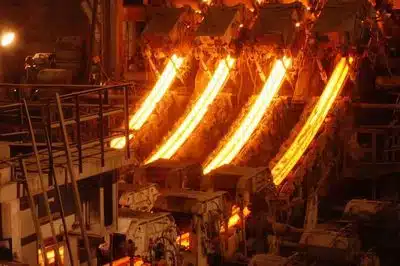Last edit: 02/08/2023

Steel is the world's largest recycling system. Steel used in everyday life can be melted down to become new steel products.
In one shell, scrap is preheated using natural gas, while in the other shell, scrap is melted using electric and chemical energy. Then, the molten steel is tapped into ladles.
At the ladles metallurgy furnaces, steel chemical composition and temperature is fine-tuned. Alloying elements are added, the carbon content is regulated, and the sulfur level is reduced. Some steel types also are vacuum treated to remove hydrogen and nitrogen.
The hot steel is turned into slabs by continuous casting. in an open, water-cooled, copper mould.
The Brescia Area is famous in Italy for the number of mini mills.
GT Engineering has run a few analysis of Continuous casting process safety, based also upon the C type Harmonised Norm EN 14753.
The activities were similar, however the solutions had to be tailored to the specific situation: no one size fits all exists in this field.
Pls feel free to call us for an initial discussion.